Home /
Long QT Syndrome
Long QT syndrome (LQTS), Congenital LQTS, Acquired LQTS
Action Potential and QT Interval
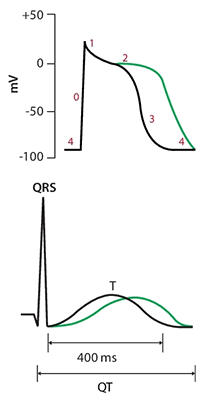
- During the action potential
- Ions pass through ion channels in the cardiomyocyte membrane
- Electrical potential changes
- A action potential curve is generated
- Ventricular action potential creates on ECG:
- With intact ion channels, the
- With ion channel dysfunction
- Action potential changes and subsequently, the ECG curve changes
- QT interval may prolong or shorten
Channelopathy
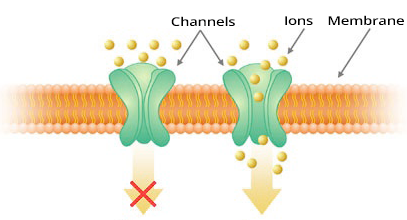
- Channelopathy is a disorder of ion channels
- Changes in action potential and ECG curve
- Most common channelopathies:
ECG and Long QT Syndrome
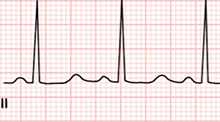
Prolonged QT Interval
- QTC = 0.58s (QTC > 440ms)

Prolonged QT Interval and Torsades de Pointes
- QTC = 0.58s
- Prolonged QTC > 0.5s regardless of the cause represents a risk for the development of Torsades de Pointes
- Torsades de Pointes
Congenital Long QT Syndrome
- It is a congenital channelopathy where the QTC > 440ms
- With a prolonged QT interval, regardless of the cause, malignant arrhythmia (such as Torsades de Pointes) is a risk
- Arrhythmia triggers: physical exertion, emotional stress, sleep...
- T wave alternans worsens prognosis
- There are 13 genetic mutations that prolong the QT interval
- Long QT Syndrome has 13 types (LQTS 1-13), each type has:
- Different mutated channels during repolarization (for potassium, calcium, sodium)
- Different action potential curve
- Prolonged QT interval
- Different shape of T waves (repolarization)
- Normal QT interval does not exclude LQTS
- QT can be prolonged with stress or exertion
- The most common are the first 3 types (LQTS 1-3)
- They account for 95% of all LQT syndromes
- LQTS 4-13 are very rare
| Geno- type |
ECG Pattern |
Channel Disorder |
Prevalence (among congenital LQTS) |
Trigger for Torsades de Pointes |
| LQT1 |
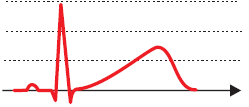 |
Potassium |
30-35% |
Physical exertion |
| LQT2 |
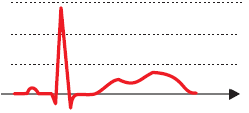 |
Potassium |
25-30% |
Emotional stress |
| LQT3 |
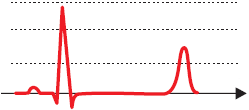 |
Sodium |
5-10% |
Sleep |
Associated LQT Syndromes
- Some genotypes of long QT syndrome are part of other syndromes
- Jervell and Lange-Nielsen Syndrome (LQTS5 + Congenital Deafness)
- Sometimes, any LQTS with deafness is generally referred to as Jervell and Lange-Nielsen Syndrome
- Romano-Ward Syndrome (LQTS1 without Deafness)
- Sometimes, any LQTS without deafness is generally referred to as Romano-Ward Syndrome
- Andersen-Tawil Syndrome (LQTS7 + Skeletal Deformities)
- Timothy Syndrome (LQTS8 + Autism + Immunodeficiency)
- In practice, these syndrome names are rarely used
- Only the term Long QT Syndrome is commonly used
Acquired Long QT Syndrome
- Most common causes of acquired long QT syndrome:

Congenital Long QT Syndrome (LQTS 1)

Congenital Long QT Syndrome (LQTS 2)
- Heart Rate: 95/min.
- Corrected QT (QTC): 500ms
- The patient has been ruled out for acquired long QT syndrome
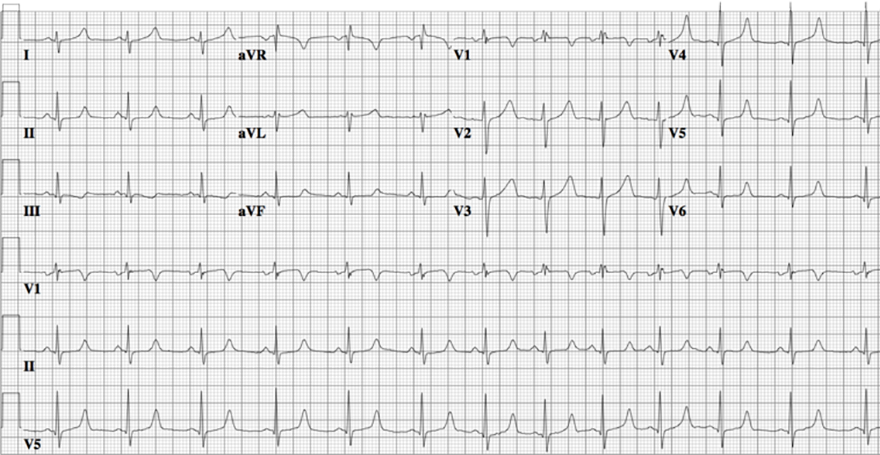
Congenital Long QT Syndrome (LQTS 3)
- Heart Rate: 90/min.
- Corrected QT (QTC): 490ms
- The patient has been ruled out for acquired long QT syndrome
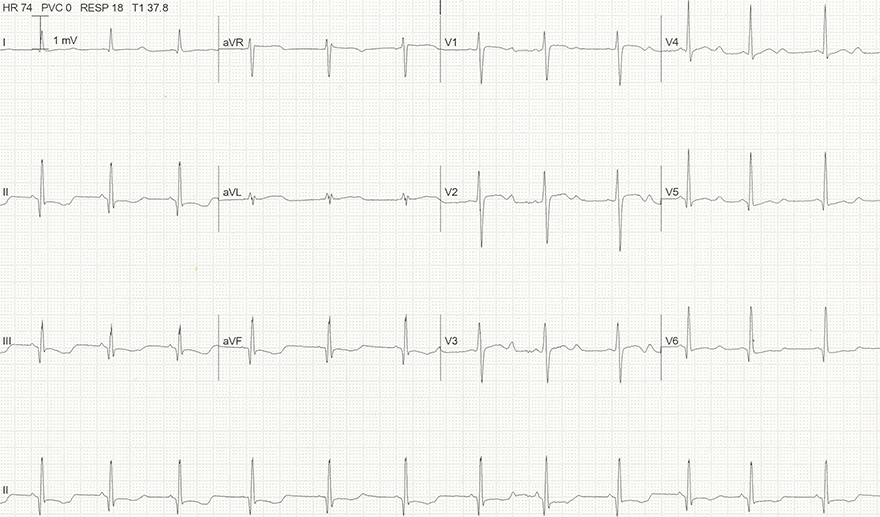
Acquired Long QT Syndrome
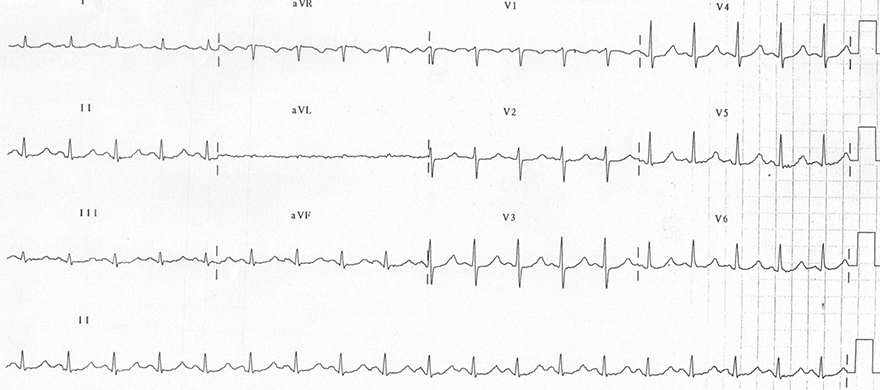
Acquired Long QT Syndrome
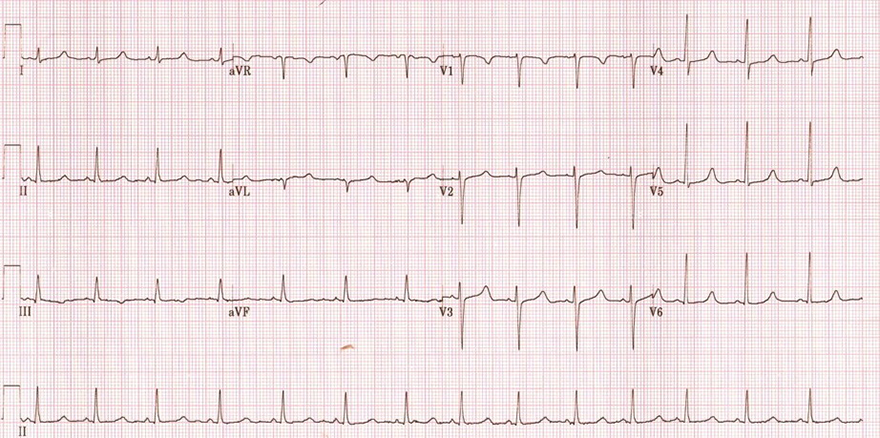
Acquired Long QT Syndrome
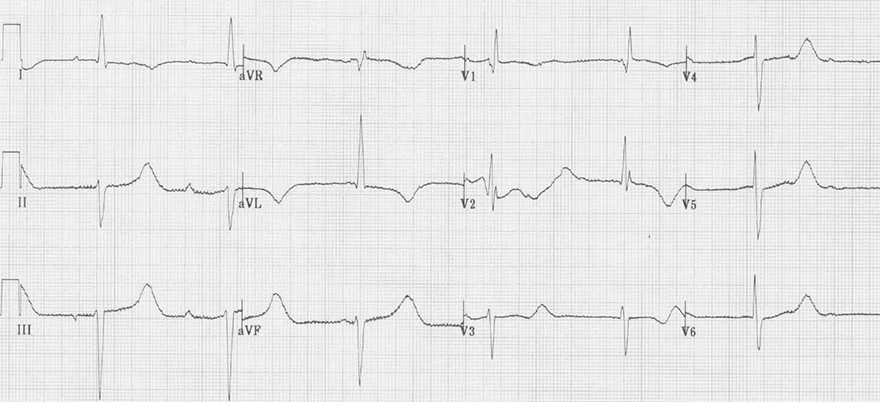
Acquired Long QT Interval Syndrome
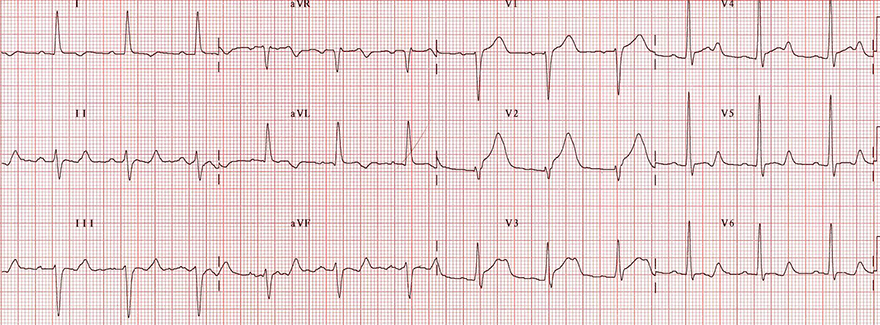
Acquired Long QT Interval Syndrome
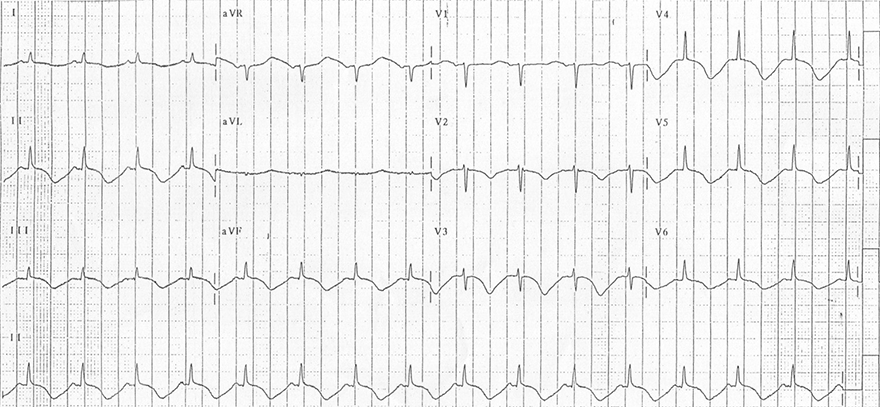
Acquired Long QT Interval Syndrome
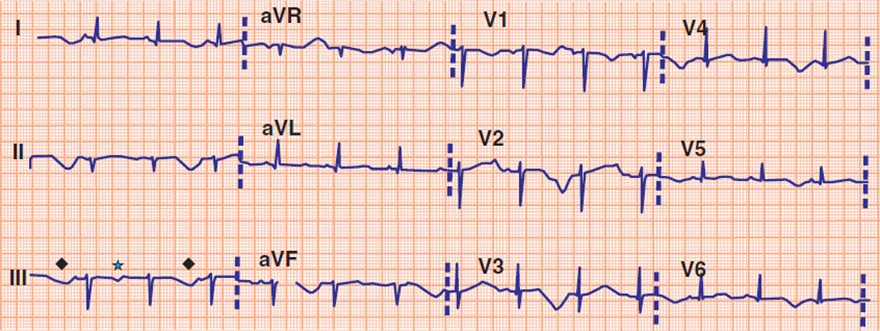
Acquired Long QT Interval Syndrome
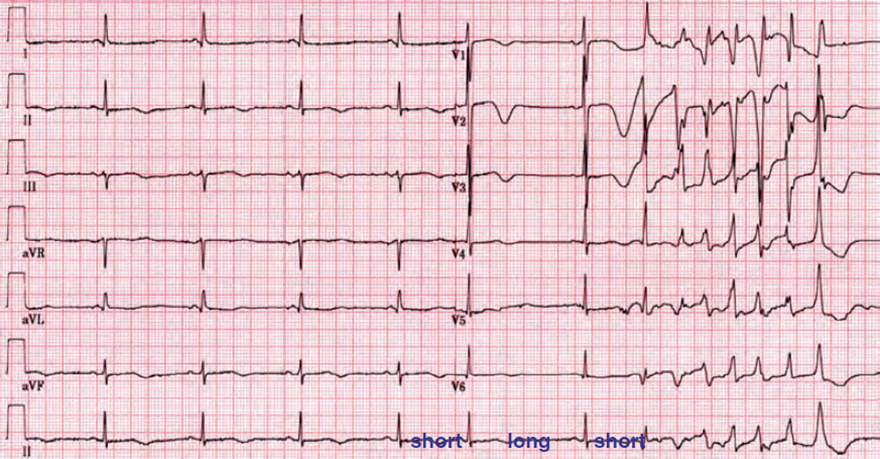
Acquired Long QT Interval Syndrome and Torsades de Pointes
- Frequency: 52/min.
- Corrected (QTC): 559ms
- Patient was taking sotalol (antiarrhythmic)
- Torsades de Pointes (second half of the ECG)
- Prolonged QT interval, regardless of the cause, represents a risk of Torsades de Pointes
- Torsades de Pointes often starts with a short-long-short RR sequence
Sources
- ECG from Basics to Essentials Step by Step
- litfl.com
- ecgwaves.com
- metealpaslan.com
- medmastery.com
- uptodate.com
- ecgpedia.org
- wikipedia.org
- Strong Medicine
- Understanding Pacemakers

Home /
Long QT Syndrome
Long QT syndrome (LQTS), Congenital LQTS, Acquired LQTS
Action Potential and QT Interval
- During the action potential
- Ions pass through ion channels in the cardiomyocyte membrane
- Electrical potential changes
- A action potential curve is generated
- Ventricular action potential creates on ECG:
- With intact ion channels, the
- With ion channel dysfunction
- Action potential changes and subsequently, the ECG curve changes
- QT interval may prolong or shorten
|
 |
Channelopathy
- Channelopathy is a disorder of ion channels
- Changes in action potential and ECG curve
- Most common channelopathies:
|

|
ECG and Long QT Syndrome
|

Prolonged QT Interval
- QTC = 0.58s (QTC > 440ms)
|

Prolonged QT Interval and Torsades de Pointes
- QTC = 0.58s
- Prolonged QTC > 0.5s regardless of the cause represents a risk for the development of Torsades de Pointes
- Torsades de Pointes
Congenital Long QT Syndrome
- It is a congenital channelopathy where the QTC > 440ms
- With a prolonged QT interval, regardless of the cause, malignant arrhythmia (such as Torsades de Pointes) is a risk
- Arrhythmia triggers: physical exertion, emotional stress, sleep...
- T wave alternans worsens prognosis
- There are 13 genetic mutations that prolong the QT interval
- Long QT Syndrome has 13 types (LQTS 1-13), each type has:
- Different mutated channels during repolarization (for potassium, calcium, sodium)
- Different action potential curve
- Prolonged QT interval
- Different shape of T waves (repolarization)
- Normal QT interval does not exclude LQTS
- QT can be prolonged with stress or exertion
- The most common are the first 3 types (LQTS 1-3)
- They account for 95% of all LQT syndromes
- LQTS 4-13 are very rare
| Genotype |
ECG Pattern |
Channel Disorder |
Prevalence (among congenital LQTS) |
Trigger for Torsades de Pointes |
| LQT1 |
 |
Potassium |
30-35% |
Physical exertion |
| LQT2 |
 |
Potassium |
25-30% |
Emotional stress |
| LQT3 |
 |
Sodium |
5-10% |
Sleep |
Associated LQT Syndromes
- Some genotypes of long QT syndrome are part of other syndromes
- Jervell and Lange-Nielsen Syndrome (LQTS5 + Congenital Deafness)
- Sometimes, any LQTS with deafness is generally referred to as Jervell and Lange-Nielsen Syndrome
- Romano-Ward Syndrome (LQTS1 without Deafness)
- Sometimes, any LQTS without deafness is generally referred to as Romano-Ward Syndrome
- Andersen-Tawil Syndrome (LQTS7 + Skeletal Deformities)
- Timothy Syndrome (LQTS8 + Autism + Immunodeficiency)
- In practice, these syndrome names are rarely used
- Only the term Long QT Syndrome is commonly used
Acquired Long QT Syndrome
- Most common causes of acquired long QT syndrome:

Congenital Long QT Syndrome (LQTS 1)

Congenital Long QT Syndrome (LQTS 2)
- Heart Rate: 95/min.
- Corrected QT (QTC): 500ms
- The patient has been ruled out for acquired long QT syndrome

Congenital Long QT Syndrome (LQTS 3)
- Heart Rate: 90/min.
- Corrected QT (QTC): 490ms
- The patient has been ruled out for acquired long QT syndrome

Acquired Long QT Syndrome

Acquired Long QT Syndrome

Acquired Long QT Syndrome

Acquired Long QT Interval Syndrome

Acquired Long QT Interval Syndrome

Acquired Long QT Interval Syndrome

Acquired Long QT Interval Syndrome

Acquired Long QT Interval Syndrome and Torsades de Pointes
- Frequency: 52/min.
- Corrected (QTC): 559ms
- Patient was taking sotalol (antiarrhythmic)
- Torsades de Pointes (second half of the ECG)
- Prolonged QT interval, regardless of the cause, represents a risk of Torsades de Pointes
- Torsades de Pointes often starts with a short-long-short RR sequence
Sources
- ECG from Basics to Essentials Step by Step
- litfl.com
- ecgwaves.com
- metealpaslan.com
- medmastery.com
- uptodate.com
- ecgpedia.org
- wikipedia.org
- Strong Medicine
- Understanding Pacemakers





































